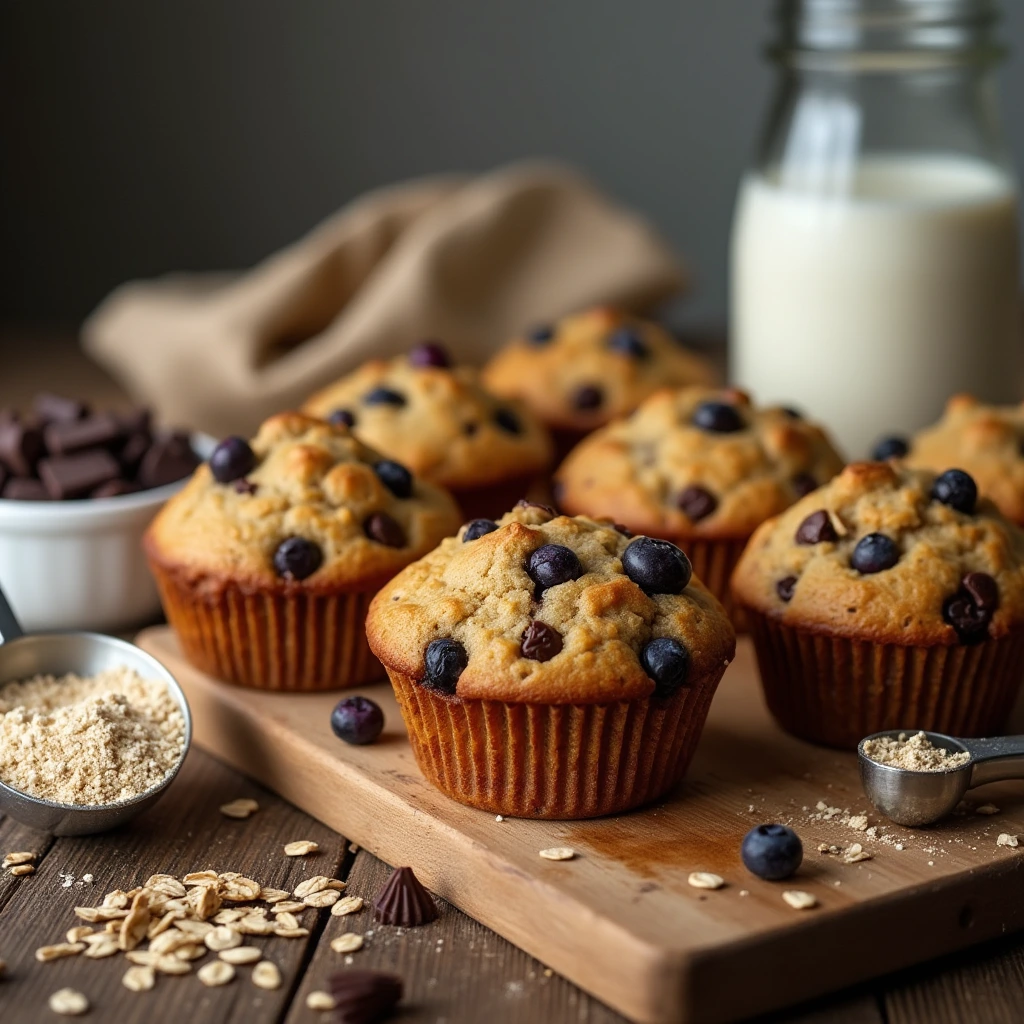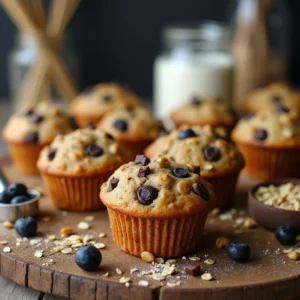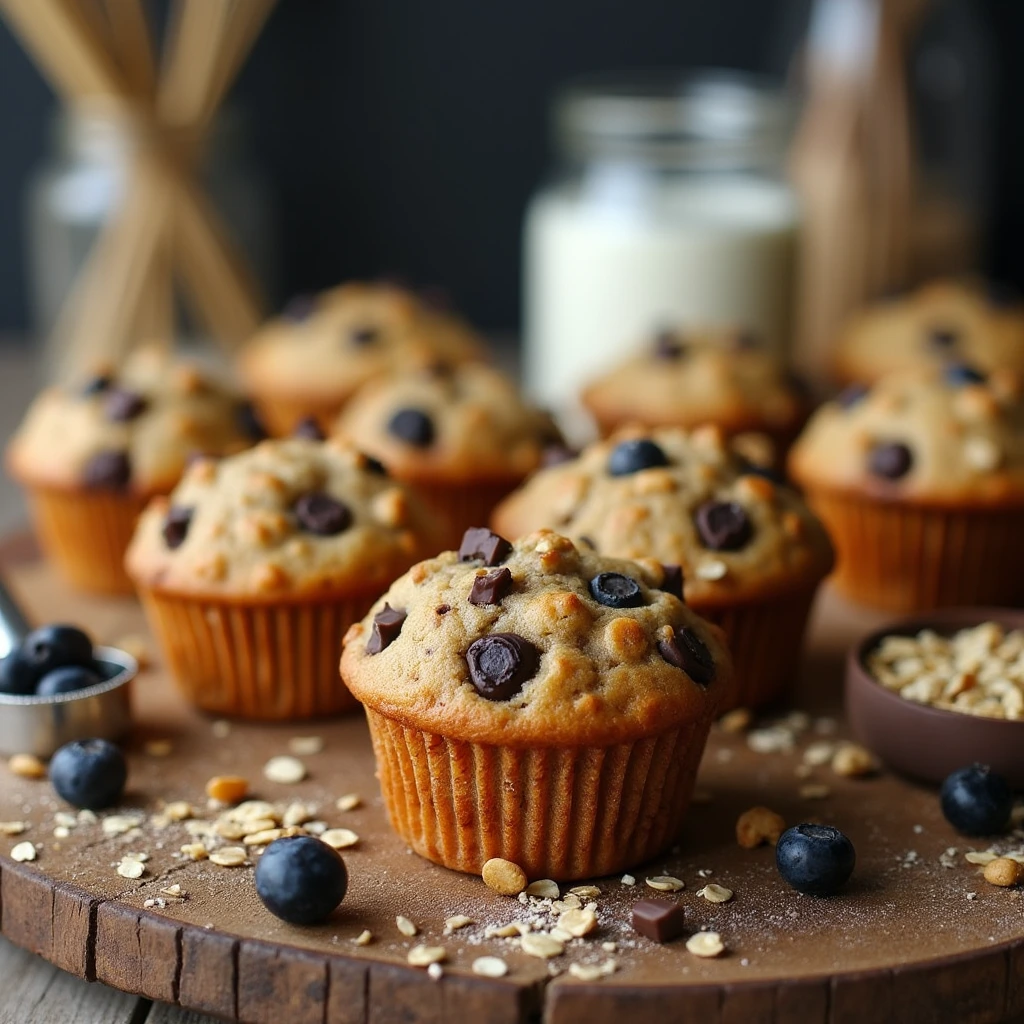If you’re looking for a snack that fuels your body and satisfies your cravings, protein muffins might be your new best friend. These tasty treats aren’t just delicious — they’re also a smart choice for anyone looking to up their protein intake, curb hunger between meals, or support fitness goals without sacrificing flavor. Whether you’re a fitness enthusiast, busy professional, or just trying to make better food choices, learning how to make your own protein muffins gives you full control over ingredients, flavor, and nutrition.

In this complete guide, we’ll walk you through everything you need to know — from choosing the best ingredients and baking your muffins to storing them and customizing with fun variations. Let’s get started.
What Are Protein Muffins and Why Are They Better Than Regular Muffins?
Protein muffins are a healthier version of traditional muffins that are typically loaded with sugar and refined carbs. Instead of relying on white flour and tons of sugar, these muffins are packed with high-quality protein from ingredients like protein powder, Greek yogurt, eggs, or nut butter. The result? A snack or breakfast option that keeps you feeling full longer, supports muscle recovery, and helps reduce blood sugar spikes.
Unlike sugary muffins that can leave you feeling hungry an hour later, protein muffins offer more satiety and balanced nutrition. Plus, they’re incredibly versatile — you can make them gluten-free, low-carb, dairy-free, or even vegan depending on your preferences.
Ingredients You’ll Need
The beauty of protein muffins is that you can make them with a variety of ingredients you probably already have in your kitchen. Here’s a base recipe that you can tweak based on your dietary needs or flavor preferences.
Core Ingredients:
- Protein powder: Whey, casein, or plant-based protein like pea or brown rice
- Eggs or egg whites: Help bind the muffins and add protein
- Greek yogurt or mashed banana: Adds moisture and flavor
- Rolled oats, oat flour, or almond flour: Forms the muffin base
- Baking powder: Helps the muffins rise
- Natural sweeteners: Maple syrup, honey, or zero-calorie options like stevia or monk fruit
Optional Add-Ins:
- Blueberries, raspberries, or chopped apples
- Dark chocolate chips or cacao nibs
- Chopped nuts or seeds
- Cinnamon, vanilla extract, or cocoa powder for flavor
These ingredients not only boost protein but also provide fiber, vitamins, and minerals. You can also easily make swaps to suit your taste, such as using flax eggs for a vegan version or almond flour for a low-carb option.
How to Make Protein Muffins: Step-by-Step Guide
Let’s walk through the process of making your muffins from scratch. This recipe yields about 10–12 standard muffins and takes around 30 minutes total — perfect for meal prep or a quick baking session.
- Prep Your Oven and Muffin Tin
Start by preheating your oven to 350°F (175°C). Line a muffin tin with paper liners or lightly grease it with nonstick spray. This helps prevent sticking and makes cleanup easier.
- Mix Wet Ingredients
In a large mixing bowl, whisk together the eggs, Greek yogurt (or mashed banana), sweetener, and vanilla extract. Mix until smooth and creamy.
- Add Dry Ingredients
In a separate bowl, combine your protein powder, flour of choice, and baking powder. Slowly add the dry mix into the wet mixture and stir until well combined. The batter should be thick but spoonable. If it’s too dry, add a splash of milk or water.
- Fold in Extras
Now’s the time to stir in your optional add-ins like berries, nuts, or chocolate chips. Be gentle so you don’t overmix the batter.
- Fill and Bake
Divide the batter evenly into the muffin tin, filling each cup about ¾ full. Bake for 18–22 minutes, or until a toothpick inserted into the center comes out clean. Let the muffins cool in the tin for 5 minutes before transferring them to a wire rack.
And that’s it! You’ve got fresh, delicious, protein-packed muffins ready to enjoy.
Choosing the Right Protein Powder for Baking
One of the most important decisions when making protein muffins is which type of protein powder to use. Not all proteins bake the same, and the wrong one can lead to dry or rubbery textures.
- Whey Protein: Great all-purpose option. Adds a light, moist texture. Choose unflavored or vanilla for best results.
- Casein Protein: Thicker and more absorbent. Ideal for denser muffins or when you want a “cakier” texture.
- Plant-Based Proteins: Pea, hemp, or brown rice protein are good vegan choices. They absorb more moisture, so adjust your liquids accordingly.
Experiment to find the right balance for your taste and dietary needs. Some people even mix whey and casein for the best texture.
Nutritional Benefits of Protein Muffins
While exact macros will vary depending on ingredients, here’s what you can typically expect in one muffin:
- Protein: 10–15g
- Carbohydrates: 10–20g
- Fats: 5–8g
- Calories: 150–200
This makes them a great post-workout snack, midday bite, or even breakfast on the go. You can easily adjust the recipe to fit your macros by using lower-carb flours, adding more egg whites, or reducing sweeteners.
Tasty Variations to Try
One of the best things about making protein muffins is how adaptable they are. Here are some creative twists:
- Chocolate Protein Muffins: Add cocoa powder and dark chocolate chips
- Apple Cinnamon Muffins: Mix in shredded apple and cinnamon spice
- Blueberry Oat Muffins: Use oat flour and fold in fresh or frozen blueberries
- Peanut Butter Banana Muffins: Add natural peanut butter and mashed banana
Want a lower-carb version? Use almond flour and reduce sweeteners. Prefer dairy-free? Use plant-based yogurt and protein. You can even make mini muffins for quick bite-sized snacks.
FAQs: Everything You Want to Know About Protein Muffins
Yes! They can help with weight management by keeping you full longer and reducing the urge to snack on less healthy options. Just be mindful of ingredients and portion sizes.
Absolutely. Let them cool completely, then store in a freezer-safe container. They’ll last up to 3 months. To reheat, microwave for 20–30 seconds or thaw overnight in the fridge.
No. You can also increase protein using ingredients like Greek yogurt, eggs, cottage cheese, or nut butter. But protein powder offers a quick, concentrated source of protein and is easy to work with.
Use silicone molds, mini loaf pans, or even ramekins. You can also bake the batter as a single loaf and slice it like bread.
Avoid overmixing, don’t overbake, and choose the right protein powder. Adding moist ingredients like yogurt or banana also helps improve texture.
Final Thoughts: Bake Your Way to Better Snacks
Making your own protein muffins at home is not only simple and rewarding, but it’s also a smart way to nourish your body with wholesome ingredients. With endless variations, you’ll never get bored — and you’ll always have a grab-and-go option that actually supports your goals.
So preheat that oven, grab your favorite mix-ins, and whip up a batch of muffins that taste great and make you feel even better. Whether you’re snacking, meal-prepping, or sharing with friends, these protein-packed treats are sure to become a staple in your kitchen.
More
For readers eager to explore more high-protein, health-focused treats, check out our recipe for Protein Brownies — a chewy, chocolatey snack that’s both satisfying and macro-friendly. Curious if treats like these are actually good for you? We break it down in Are Protein Brownies Good for You?, a helpful guide on the health benefits and nutritional content of protein-based baked goods. If you’re seeking variety in your protein-packed snacking, High Protein Dinner Ideas can help round out your meal planning. For even more baking inspiration, explore Fit Foodie Finds and Minimalist Baker — two fantastic external resources offering healthy recipes that include plant-based and gluten-free options. Whether you’re new to baking or a seasoned pro, these additional recipes and nutrition insights can elevate your protein-rich lifestyle.

Protein Muffins
Equipment
- Muffin tin
- Mixing Bowls
- Whisk or Hand Mixer
Ingredients
Protein Muffin Base
- 0.5 cup protein powder whey, casein, or plant-based
- 2 eggs or egg whites
- 0.5 cup Greek yogurt or mashed banana
- 1 cup oat flour or almond flour
- 1 tsp baking powder
- 0.25 cup maple syrup or honey or stevia/monk fruit for low-cal
- 1 tsp vanilla extract
Optional Mix-ins
- blueberries, nuts, chocolate chips as desired
Instructions
- Preheat oven to 350°F (175°C). Line a muffin tin or grease lightly.
- In a bowl, whisk eggs, Greek yogurt, maple syrup, and vanilla extract until smooth.
- In another bowl, combine protein powder, flour, and baking powder. Add to wet ingredients and stir until smooth.
- Fold in any mix-ins like fruit or chocolate chips. Scoop batter into muffin tin, filling each ¾ full.
- Bake 18–22 minutes, or until a toothpick comes out clean. Let cool before serving or storing.

